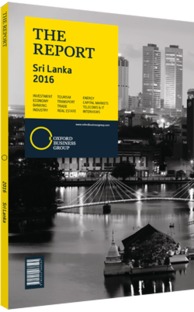Damayanthi Fernando, Director-General, Insurance Board of Sri Lanka (IBSL): Interview

Interview: Damayanthi Fernando
To what extent do you expect market restructuring following the rollout of new regulations?
DAMAYANTHI FERNANDO: With major regulatory reforms introduced by IBSL, we expect the insurance industry to be more robust, competitive and manage its business affairs in an efficient manner to add greater value for its stakeholders. One of the reforms introduced is the segregation of composite insurance companies into separate business classes. This requirement was introduced in 2011 by an amendment to the Regulation of Insurance Industry Act, No. 43 of 2000. Companies were given a period of four years to decide on the models of segregation and to meet the regulatory requirement. There were 12 composite insurance companies in the market in 2011, where this requirement applied. Such companies needed to split into two separate companies by February 2015, and now nine of the 12 companies have segregated successfully. Out of these, Union Assurance and AIA Insurance, have sold their general insurance companies to Fairfax and Janashakthi, respectively. Apart from this, there have been no major changes in ownership structures. There has also been a required increase in the stated capital of insurers from approximately LKR100m ($720,000) to LKR500m ($3.6m), which came into effect in February 2015.
Another major regulatory reform is the implementation of the risk-based capital (RBC) rules, mandatory from 2016. The RBC rules replace the solvency margin rules, which were in existence from the time IBSL was established. With these changes, including the requirement to list on the Colombo Stock Exchange, smaller companies may consolidate because of higher capital requirements imposed. The RBC framework was introduced after many tests were carried out. A very pragmatic approach was adopted prior to implementing the RBC rules. Companies were required to report under both solvency and RBC frameworks, which gave an opportunity for everyone to identify areas for improvement and increase the receptiveness to manage risks. Interestingly, the industry has been very positive about the changes taking place, and we have adopted a close and continuous consultative approach prior to implementing regulatory changes. Going forward we intend to implement a risk-based supervisory approach. Currently, we are focusing on a rules-based supervisory approach, ensuring that companies are compliant with the laws. In the future we intend to change our supervisory approach gradually to a more risk-sensitive supervisory system, and to impose greater responsibility to the boards and senior management of insurers.
How do you see class segregation improving underwriting performance?
FERNANDO: In the short term we may not see a huge improvement, but in the long term policyholders will see a benefit arising from class segregation. The main premise was to separate assets and liabilities of life and general businesses, and to encourage firms to focus on one business line. Then the underlining profits and losses will be more visible, and one business line will not be dependent on the other through cost-sharing, for example. We do not see premiums as a big issue here because companies should look at their expenses, service levels, claim settlement processors and risk management processors.
There was a time period when IBSL set minimum tariff rates for motor, fire and employers’ liability and maximum rates for motor. Later on, tariff rates were abolished as it was believed that rates should be decided by market forces rather than the regulator imposing minimum or maximum rates.
Yet in spite of these changes, we have witnessed the sector developing with an overall growth rate of approximately 17%, post segregation. Long-term insurance has grown by approximately 20% and general insurance by about 15% in 2015.
You have reached the limit of premium articles you can view for free.
Choose from the options below to purchase print or digital editions of our Reports. You can also purchase a website subscription giving you unlimited access to all of our Reports online for 12 months.
If you have already purchased this Report or have a website subscription, please login to continue.

